The HTC Flyer Review
by Anand Lal Shimpi on June 21, 2011 4:05 AM EST- Posted in
- Tablets
- HTC
- Android 2.3
- Mobile
- Flyer
HTC Scribe
Where HTC really tries to break the mold with the Flyer is through its optional digital pen - the HTC Scribe. I refer to this as breaking the mold because with the advent of capacitive touch screen mobile devices, the stylus is all but extinct. What used to be commonplace in the days of the Palm V is now a relic of a forgotten time. Why would HTC then bring it back?
In our iPad 2 review I mentioned the tablet input problem. My issue with tablets isn't that input is fundamentally broken on them, because it's not. Rather a problem I have is that the types of input todays tablets are optimized for is fundamentally limited. Tablets like the iPad or Eee Pad provide a great touch and scroll experience, but typing suffers as a result of the lack of a physical keyboard. Note taking is also a problem - while drawing with your finger may be fun, it's not exactly as quick (or as clean/neat) as scribbling something down in a notepad. I believe the tablet as a form factor has a lot of room to grow and mature before the input problem is completely solved, and it'll like require a combination of inputs to truly perfect. The Flyer is simply HTC's attempt at evolving the platform.
So for $79.99 HTC will well you the Scribe, a battery powered digital pen that lets you take notes and annotate pretty much anything you see on the Flyer's display. Here's where HTC's software talents were really put to use.
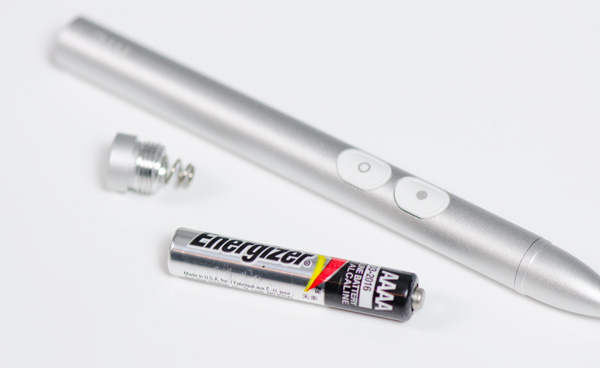
The Scribe is powered by one AAAA battery
Take the Scribe and tap it anywhere on the Flyer's screen when it's unlocked, regardless of what app you're in. As soon as the Scribe hits the screen, HTC's software will pause the active app, take a screenshot of the current screen and display it for you for annotation.
You are then free to draw all over the screen as you see fit. When you're done just use your finger to swipe up the screen and you'll bring up a menu that lets you save the image, share it, print it or throw it away. Images you save are automatically added to the Notes application - unfortunately there's no way to avoid doing so and just save the capture to NAND. Images you share are stored as JPGs and at full 1024 x 600 resolution.
Remember the fourth button from the row of capacitive Android buttons on the face of the Flyer? It's only accessible via the Scribe. Tap on it and you'll get a popup menu to customize what your pen does. You can change ink colors, brush size and of course the tip style as well.
The pen has built in history so you can step through and undo actions with the pen. It also has an eraser tip that you can either choose through the popup menu or just hold the upper of two buttons on the pen to turn it into an eraser automatically.
The annotation features of the Flyer work surprisingly well. The biggest selling point (other than just screwing around with your brand new tablet) is if you need to share a slide, email or web page with someone else and make comments on it. Just browse to the document, email or web page you want to comment on, tap the screen with the pen and edit away. If the Flyer's screen were larger I could see this being a huge selling point for graphic designers, but with a 7-inch 1024 x 600 display you run out of room for notes really quickly (unless you're good at writing in very tiny letters using the Scribe).
If you aren't looking to mar up existing documents, there's also a dedicated Notes app that's designed to be a digital notebook. You can write in the notebook, use it to record audio (this is where the Flyer's two microphones come in handy) or even take photos and insert them in the middle of your notes.
HTC is particularly proud of the fact that its Notes app will correlate notes you're taking with audio recorded while you're taking them. For example, if you jot down a note a minute into your audio recording, upon playback you'll get a little marker identifying what you wrote down when that particular audio was recorded.
The Notes app will sync with Evernote so you get cloud storage of your notes and can access them on multiple devices without sharing. Evernote support is pretty cool as it all of the sudden makes the Flyer more useful since you don't need to always have it on you to access the notes you've taken. Logging in to the Evernote website gives you full access to all screenshots you've taken an inserted in the Flyer's Notes app as well as audio you've recorded in Notes. Notes are synced with Evernote in a matter of seconds after saving them on the Flyer, it's really quick.
Evernote does perform server side OCR (Optical Character Recognition) and as a result your handwritten notes are actually searchable through Evernote. The OCR worked surprisingly well. I searched for "web browsing" and this test note showed up on my Evernote account:
Unfortunately searching for the word "Twitter" yielded no results, so your mileage may vary.
I'd say if any tablet is really trying to be a productive device it's the Flyer. While it's still a niche device, Evernote integration is what really makes this niche work.
Writing in Notes works surprisingly well. You can alternate between using HTC's virtual keyboard and the Scribe. No one has figured out the way to provide natural feedback using a digital pen at this point so that aspect of the Scribe experience is still uncomfortable. The pen is sensitive enough to allow you to write without fatigue. Unfortunately resting your hand on the screen while you write can sometimes result in the Flyer sensing for finger rather than pen input. For the most part it works but if I didn't consciously start writing before my hand touched the screen the Notes app would pull up the virtual keyboard.
The Notes app is very functional but feels a bit more sluggish than I'd like. If you're trying to mimic the behavior of paper, the UI has to be seamless and HTC unfortunately doesn't deliver that experience flawlessly. Notes also only works in portrait mode, there is no landscape support. Overall the app and integration are better than expected and definitely usable, but not perfect.
HTC's Scribe also integrates very well with the Flyer's e-reader app: Reader. You can of course annotate pages of a book but you can also highlight passages - just hold the lower button on the Scribe and select your text.
Scribe integration continues even through HTC's PDF Viewer app. Here you can again annotate or highlight text. You can even save your changes with the Scribe's ink in a separate layer or flatten the document and save it as a single layer PDF (e.g. if you wanted to sign and return a PDF contract).
I have to say that overall what HTC has done with the Scribe in the Flyer goes above and beyond what I expected. I honestly thought it would be more of a gimmick but in reality it's actually well executed and useful.




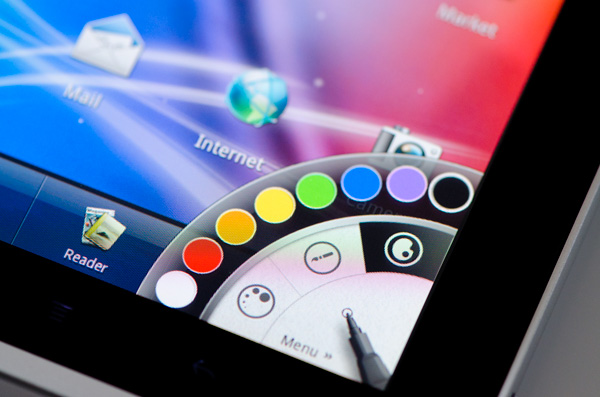
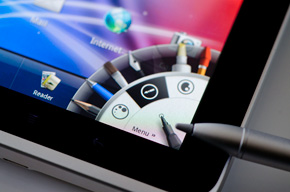

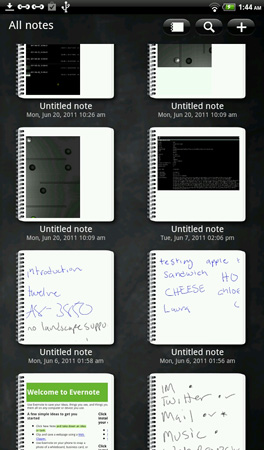
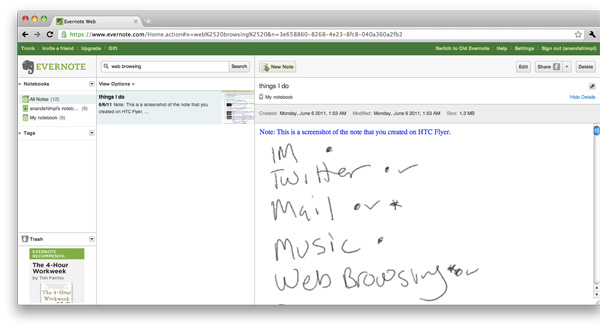
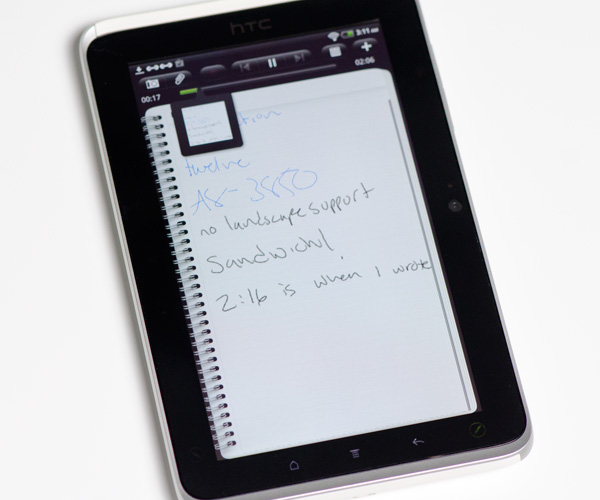
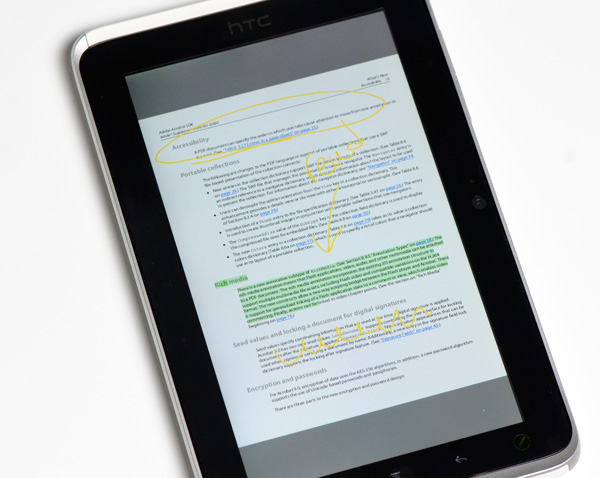








26 Comments
View All Comments
piroroadkill - Tuesday, June 21, 2011 - link
.. and should include the pen. Oh well.nitin213 - Friday, June 24, 2011 - link
At a recent roadshow in Singapore, HTC flyer was available for S$550 in a whispered deal (~US$460) and came bundled with the scribe and a cover.. I guess wait for similar deals in US if you really want it bundled.That said, I still went with an iPad even though i bought N1 immediately at launch. The key reason was quite simple... while numbers suggest that flyer is lighter, the smaller size meant it has much more heft and thus fingers get tired a bit faster (I was always holding flyer with a stronger grip). the scribe though useful addition wasnt always avlbl right away as there is no old-stylus style storage area on the tablet.. And lastly, the old adage.. never buy a first generation product from a company...I like HTC and am sure their next gen product would blow the competition, but flyer was not for me.
cheers
m.amitava - Tuesday, June 21, 2011 - link
I've seen that HTC Sense's facebook app captures higher res images of your contacts than the regular facebook app so that when you receive a call ( I am on a Desire HD on Gingerbread) from your contacts, their pic doesn't come out as a pixelated hash.So in that small way I do prefer the Sense implementation
Impulses - Tuesday, June 21, 2011 - link
HTC's whole FB contact integration system works better than the native one from the official FB app... That and the lovely lockscreen previews of calendar events, messages and music (plus app shortcuts now!) are the two biggest advantages that Sense has over stock Android. There's other minor things here and there (camera interface, motion sensing settings for the ringer, notification pane toggles, etc) but you can replicate most of them with market apps, and in some cases it's stuff that Honeycomb has addressed (and ICS surely will too).arbarath - Tuesday, June 21, 2011 - link
nice tablet.. but too expensive..therealnickdanger - Tuesday, June 21, 2011 - link
I wouldn't pay more than $200 for this. 7", not 10". Gingerbread, not Honeycomb. Poor battery life. You'd think with the that much thickness, they could have fit a huge battery in it. Oh well...xSauronx - Tuesday, June 21, 2011 - link
I think 300 or so is a fair price with the scribe stuff included, tops, considering the size and screen quality. Maybe 250 (since the nook color can pack an ips panel in a 7" tablet for that)but 500? No way. Why do companies keep pricing their devices so poorly?
Souka - Tuesday, June 21, 2011 - link
in attempt to recover part of development cost and because people keep buying themap90033 - Wednesday, June 22, 2011 - link
I agree this is a rip off and not that great of a product...Cow86 - Tuesday, June 21, 2011 - link
In Europe the pen IS included with every purchase, and the 16 GB model goes vor 499 euro's here...after the conversion maybe not really better value, but it's worth noting anyway. Puts it 20 euro's above the Ipad 2 16 GB wifi though, and I'm not sure a lot of people would pay that, except maybe the niche that really wants the scribe.